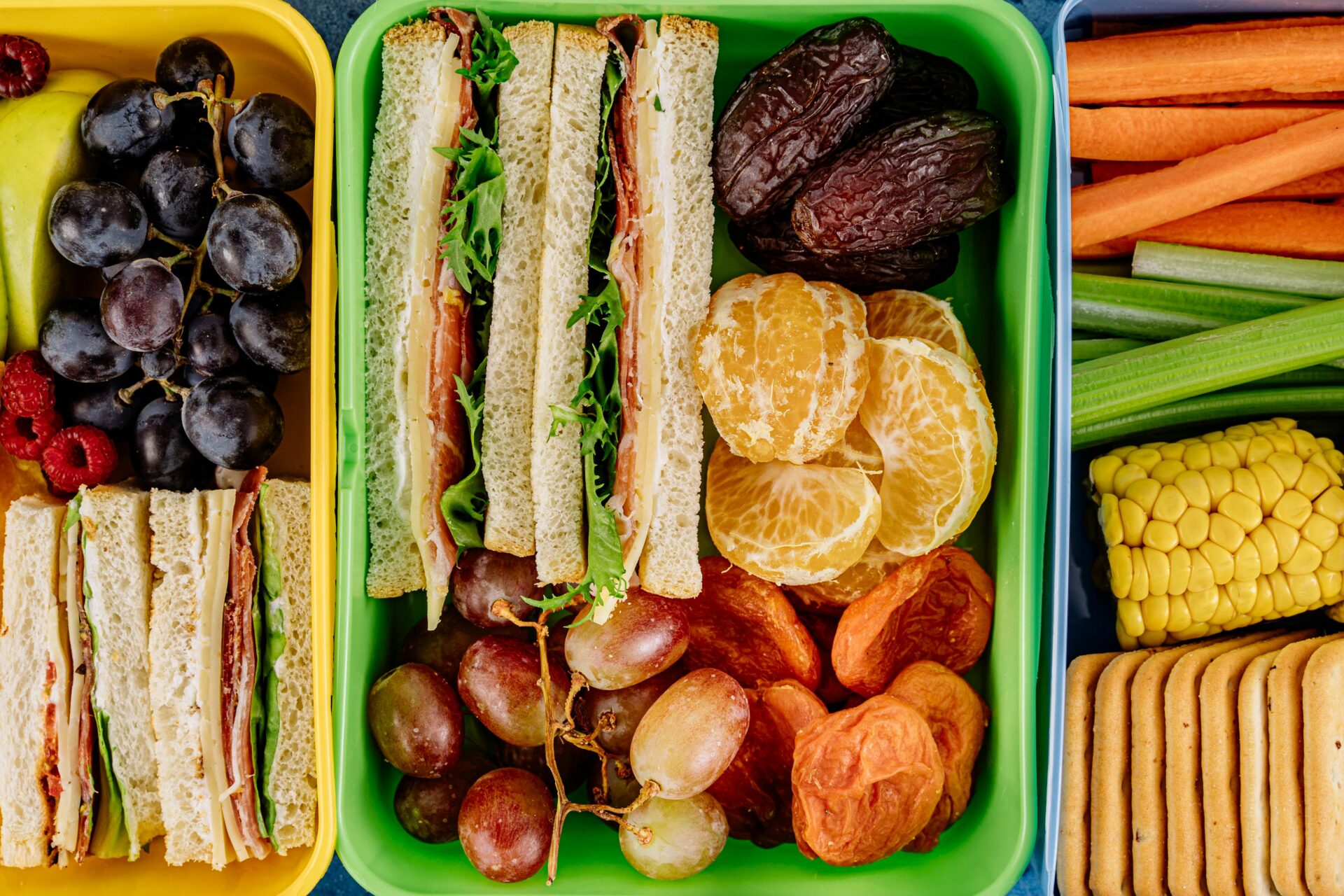As we enter the holiday season and wrap up another year, it’s a great time to start evaluating and changing up some family food and nutrition habits.
Whether you’re planning holiday meals, dealing with picky eaters, or simply trying to plan ahead, these quick tips can help your family build a positive relationship with food and nutrition.
Our registered dieticians understand that good nutrition is about more than just what we eat—it’s about creating healthy habits that last a lifetime.

\Here are five practical tips to help your family thrive…
Nutrition Tip 1: Get Kids in the Kitchen!
Would you like your kids to grow up with an interest and love of healthy eating?Start by inviting them into the kitchen!
Cooking together is one of the most effective ways to model positive food behaviors and build confidence around food.
This approach works because kids are more likely to try foods they help prepare and cooking teaches valuable life skills and kitchen safety. This is also a natural way to discuss nutrition and healthy choices while spending time together and creating positive food memories.
Quick Ideas for Cooking with Kids:
– Let them wash fruits and vegetables
– Have them measure and pour ingredients
– Involve them in menu planning
– Make simple snacks together
– Allow them to help with age-appropriate tasks
Remember, the goal isn’t perfection—it’s about making food preparation a fun, engaging family activity.
We’ve also got 4 easy and fun recipes you can cook with the kids! These are a great way to get everyone in the kitchen and involved.
Nutrition Tip 2: Family Food Habits Matter
Your family’s approach to food has an impact on your child’s relationship with nutrition and healthy eating. Children learn by watching their parents and family so developing and practicing healthy food habits helps them develop healthier lifelong behaviors.
Simple Ways to Build Positive Food Habits:
• Eat meals together whenever possible
• Avoid using food as rewards or punishment
• Talk positively about different foods
• Show enthusiasm for trying new foods
• Create a calm, pleasant mealtime environment
Small changes can make a big difference so focus on one or two habits you’d like to improve rather than trying to change everything at once.
Want to learn more about building positive food habits in your family? Check out our 5 tips for modeling positive food behavior
Nutrition Tip 3: Making Healthy Choices Together
Building healthy eating habits is a family affair. When children are involved in making food choices, they’re more likely to try healthier options. The key to this is to make it engaging and age-appropriate.
Healthy Choice Strategies:
• Let kids help create the grocery list
• Play “food detective” by reading labels together
• Have children pick a new fruit or vegetable to try each week
• Discuss food groups and balanced meals in simple terms
• Make a game of choosing colorful foods at the store
Healthy choices don’t have to be complicated! Focus on whole foods, plenty of fruits and vegetables, and a balance of nutrients. Small changes, like choosing water over sugary drinks, can make a big difference in your family’s health.
And healthy food choices don’t have to be hard, even when traveling! Try these simple tips for healthier fast food options!
Nutrition Tip 4: Building a Healthy Family Pantry
A well-stocked pantry makes it easier to prepare nutritious meals and snacks. When healthy options are at your fingertips, your family is more likely to make good food choices, even during busy times.
A Quick List of Pantry Essentials:
• Whole grain items (pasta, rice, crackers)
• Healthy protein sources (beans, nuts, nut butters)
• Quick cooking grains (oatmeal, quinoa)
• Shelf-stable fruits and vegetables
• Healthy snack options
To make healthy snacking easy for the whole family, create a ‘Smart Snack Station’ in your home.
Keep nutritious options at kid-height and pre-portion snacks that can be grabbed on the go. Include a mix of proteins, whole grains, and fresh produce.
Want more ideas for organizing your pantry and creating healthy snack stations? Check out our simple guide for overhauling your pantry.
Nutrition Tip 5: Supporting Picky Eaters
Dealing with a picky eater can make family nutrition feel challenging. Remember that picky eating is a normal phase of development, and with patience and the right strategies, you can help your child expand their food choices while maintaining peace at family mealtimes.
Practical Strategies for Picky Eaters:
• Serve new foods alongside familiar favorites
• Keep portions small and manageable
• Avoid pressure or battles over food
• Model enjoying a variety of foods
• Celebrate small wins with trying new foods
As you’re supporting your child through this phase, keep a few things in mind. It can take 15-20 exposures for a child to accept a new food so focus on progress, not perfection.
Keep mealtimes positive and pressure-free and try involving your picky eater in meal planning and preparation! When they feel included, they are more likely to give new foods a try.
For more detailed ideas on supporting your picky eater, check out our guide: “5 Tips for Packing Lunch for Your Picky Eater“
Building healthy nutrition habits as a family is a journey, not a destination.
Start with small, manageable changes and build from there. Remember, what works for one family might not work for another, so adapt these tips and ideas to fit your family’s specific needs.
And if you have concerns about your child’s eating habits, or your family’s overall nutrition, we’d love to offer you more personalized support from one of our Registered Dieticians. We offer in-home therapy services designed to support your family’s nutrition journey in a comfortable, familiar environment.
Ready to take the next step toward better nutrition? Reach out to us at Beyond Speech Therapy Services.

